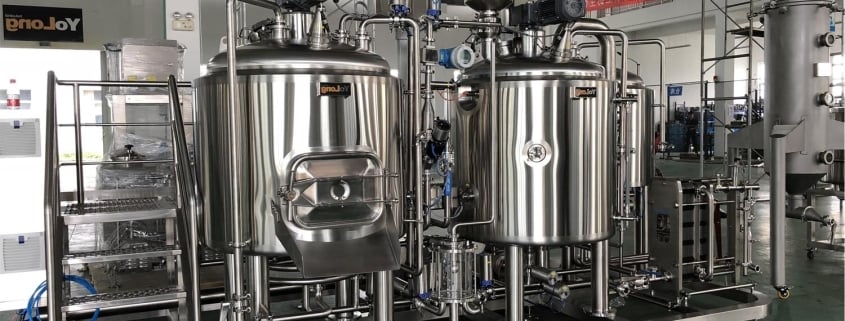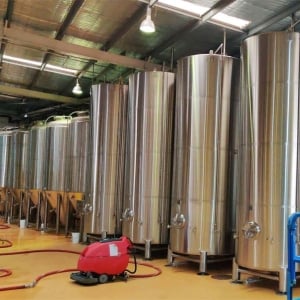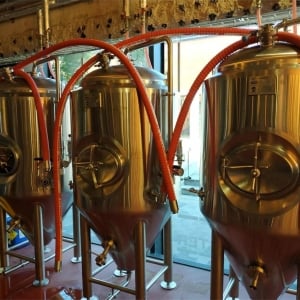Stainless Steel Beer Tanks
Stainless steel beer tanks are the unsung heroes of the brewing industry, silently safeguarding the integrity and quality of your favorite craft beers. From fermentation to storage and serving, these versatile vessels play a crucial role throughout the brewing process. But what exactly are they, and why are they the preferred choice for brewers of all sizes?
Unveiling the Secrets of Stainless Steel
Stainless steel is an alloy of steel containing a minimum of 10.5% chromium, making it resistant to corrosion and rust. This characteristic is paramount for beer tanks, as they need to withstand the constant exposure to moisture, acids, and cleaning solutions without compromising the integrity of the beer.
Types of Stainless Steel Used in Beer Tanks:
| Type | Description | Applications in Beer Tanks |
|---|---|---|
| 304 (18/8) | Most common type, offering good corrosion resistance and formability. | Fermenters, brite tanks, serving tanks. |
| 316 (16/8) | Enhanced molybdenum content for superior corrosion resistance, especially in salty environments. | Tanks for sour beers, hoppy beers, or use with harsh cleaning chemicals. |
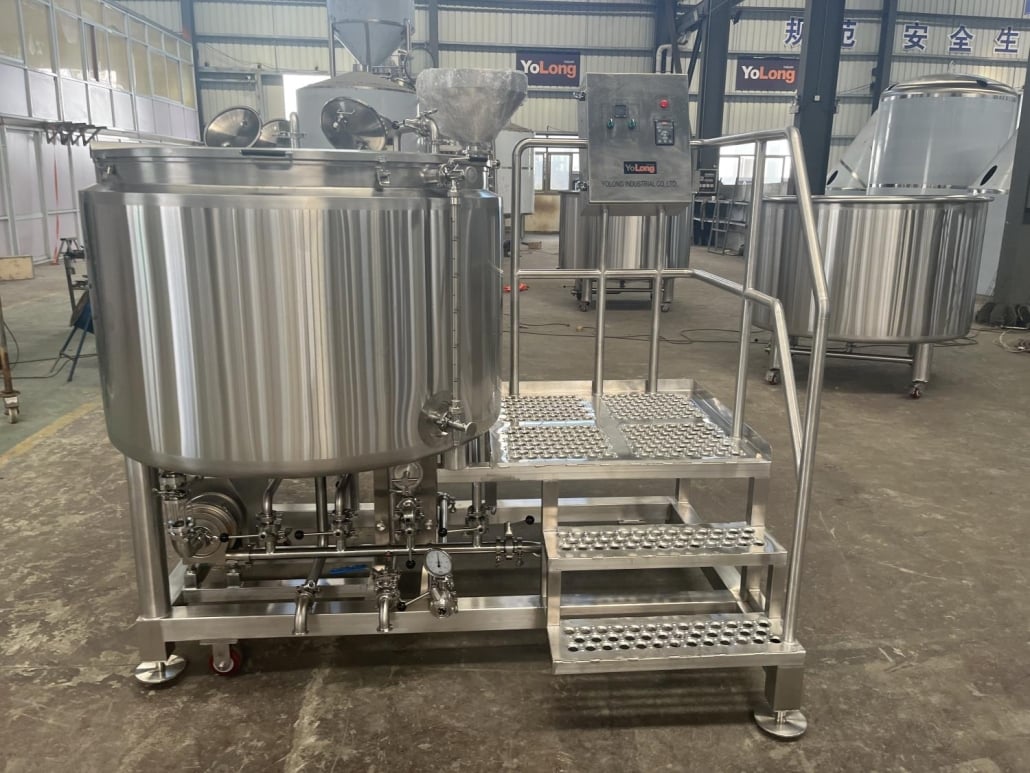
The Diverse Landscape of Stainless Steel Beer Tanks
Beer tanks come in various shapes and sizes, each catering to specific stages of the brewing process:
Fermenters: These cylindrical tanks with conical bottoms house the wort (unfermented beer) during the crucial fermentation stage, where yeast transforms sugars into alcohol and carbon dioxide.
Brite Tanks: Also known as serving tanks, these polished vessels store and condition the finished beer, allowing it to settle and carbonate before kegging or bottling.
Horizontal Tanks: Ideal for space-constrained breweries, these tanks lie on their side and are often used for cold storage or serving.
Serving Tanks: These smaller tanks dispense beer directly to draft systems, ensuring consistent temperature and pressure during pouring.
The Advantages of Stainless Steel Beer Tanks
Durability: Stainless steel boasts exceptional strength and resilience, withstanding the wear and tear of everyday brewery operations.
Hygiene: The smooth, non-porous surface of stainless steel inhibits the growth of bacteria and other microorganisms, promoting optimal sanitation and beer quality.
Ease of Cleaning: The smooth surface allows for thorough cleaning and sanitization, minimizing the risk of contamination.
Temperature Control: Stainless steel conducts heat efficiently, facilitating precise temperature control during fermentation and storage, crucial for optimal beer flavor and quality.
Versatility: Stainless steel tanks can accommodate various brewing methods and styles, making them suitable for a wide range of breweries, from small craft operations to large-scale producers.
Choosing the Right Stainless Steel Beer Tank
Selecting the right beer tank goes beyond aesthetics; it’s a critical decision impacting your brewing process and final product. Here are key factors to consider:
Size: This depends on your production volume, batch size, and available space. Consider future expansion plans when making your choice.
Shape: The cylindrical shape with a conical bottom (CCT) is popular for its efficiency in collecting yeast sediment and maximizing headspace for fermentation.
Material: Opt for 304 stainless steel for most applications, and consider 316 for sour beers or use with harsh cleaning chemicals.
Insulation: Insulated tanks help maintain consistent temperatures, especially crucial for lagers and other temperature-sensitive styles.
Manufacturer Reputation: Choose a reputable manufacturer known for quality materials, construction, and customer service.
Budget: Stainless steel tanks are an investment, but their durability and long-term value outweigh the initial cost.
Additional Features: Consider features like pressure gauges, carbonation stones, and CIP (Cleaning In Place) systems to streamline your brewing process.
Examples of Stainless Steel Beer Tank Suppliers and Pricing:
| Supplier | Tank Type | Size (Gallons) | Price Range (USD) |
|---|---|---|---|
| Glacier Tanks | Fermenter (CCT) | 100 | $2,500 – $3,500 |
| Speidel | Brite Tank | 200 | $3,000 – $4,000 |
| MoreBeer! | Serving Tank | 50 | $500 – $750 |
Remember: These are just ballpark figures, and actual prices may vary depending on specific features, customization options, and market fluctuations.
the Pros and Cons of Stainless Steel Beer Tanks
Advantages
- Durability and Longevity: Stainless steel is incredibly strong and resistant to dents, scratches, and other forms of wear and tear. This makes them ideal for the demanding environment of a brewery, where they can withstand years of use without succumbing to damage.
- Corrosion Resistance: Stainless steel is highly resistant to corrosion, even when exposed to acids and alkalies that are commonly found in beer. This is because the chromium in stainless steel forms a protective oxide layer that prevents the underlying metal from rusting. This is especially important for maintaining the quality and taste of the beer, as corrosion can lead to off-flavors and aromas.
- Easy to Clean and Maintain: The smooth, non-porous surface of stainless steel makes it very easy to clean and sanitize. This is essential for preventing the growth of bacteria and other microorganisms that can spoil the beer. Stainless steel tanks can be easily cleaned with hot water and cleaning chemicals, and they do not require any special coatings or sealants.
- Purity and Hygiene: Stainless steel is a non-reactive material, meaning that it does not leach any chemicals or flavors into the beer. This helps to ensure that the beer retains its pure flavor and aroma. Additionally, the smooth surface of stainless steel helps to prevent the buildup of bacteria and other contaminants, which can also affect the taste of the beer.
- Temperature Control: Stainless steel has good thermal conductivity, which means that it can transfer heat efficiently. This is important for brewers who need to be able to control the temperature of their beer during fermentation and storage. Stainless steel tanks can be used with glycol jackets or other cooling systems to maintain consistent temperatures.
Disadvantages of Stainless Steel Beer Tanks
While stainless steel offers numerous advantages for beer tanks, it’s important to be aware of its potential drawbacks:
Cost: Compared to other materials like plastic or even specific types of lined carbon steel, stainless steel is significantly more expensive. This can be a major consideration for smaller breweries or homebrewers with limited budgets.
Weight: Stainless steel is a heavy material, making the tanks themselves quite weighty. This can pose challenges in terms of transportation, installation, and maneuvering within the brewery. Additionally, the weight can add significant stress to the supporting structures, requiring robust foundations and potentially increasing infrastructure costs.
Limited Size Options: While readily available in various sizes, stainless steel doesn’t offer the same level of flexibility as some other materials for extremely large tanks. This can limit options for breweries requiring massive fermentation or storage capacities.
Susceptibility to Staining: While generally resistant to corrosion, stainless steel can be susceptible to staining if not properly cleaned and maintained. This can affect the aesthetics of the tank and potentially even harbor unwanted bacteria or flavors if not addressed promptly.
Difficulty in Repair: While robust, damage to stainless steel tanks can be difficult and expensive to repair compared to some other materials. Welding repairs require specialized skills and equipment, and depending on the extent of the damage, replacing the tank entirely might be more cost-effective.
Potential for Temperature Fluctuations: While stainless steel offers good thermal conductivity, it’s not as efficient as some other materials like copper. This can make it slightly more challenging to maintain precise temperature control, especially for delicate styles of beer.
Mitigating the Downsides:
- Financing options: Explore financing options from equipment suppliers or lenders to spread the cost of your tanks over time.
- Investing in handling equipment: Hoists and dollies can significantly ease the burden of maneuvering heavy tanks.
- Careful handling: Implement proper handling procedures and train staff to minimize the risk of dents and damage.
Advanced Features in Stainless Steel Beer Tanks
Advanced Features:
- Jacketed Tanks: These tanks feature a double wall with a space in between that can be filled with glycol or water for precise temperature control, crucial for lagers and other temperature-sensitive beers.
- Carbonation Stones: These porous stones diffuse CO2 into the beer, allowing for precise carbonation control and consistent mouthfeel.
- CIP (Cleaning In Place) Systems: Automated cleaning systems minimize manual cleaning time and effort, promoting consistent sanitation and hygiene.
The Impact of Advanced Features:
While these features add to the initial cost, they can significantly enhance efficiency, product quality, and consistency in the long run.
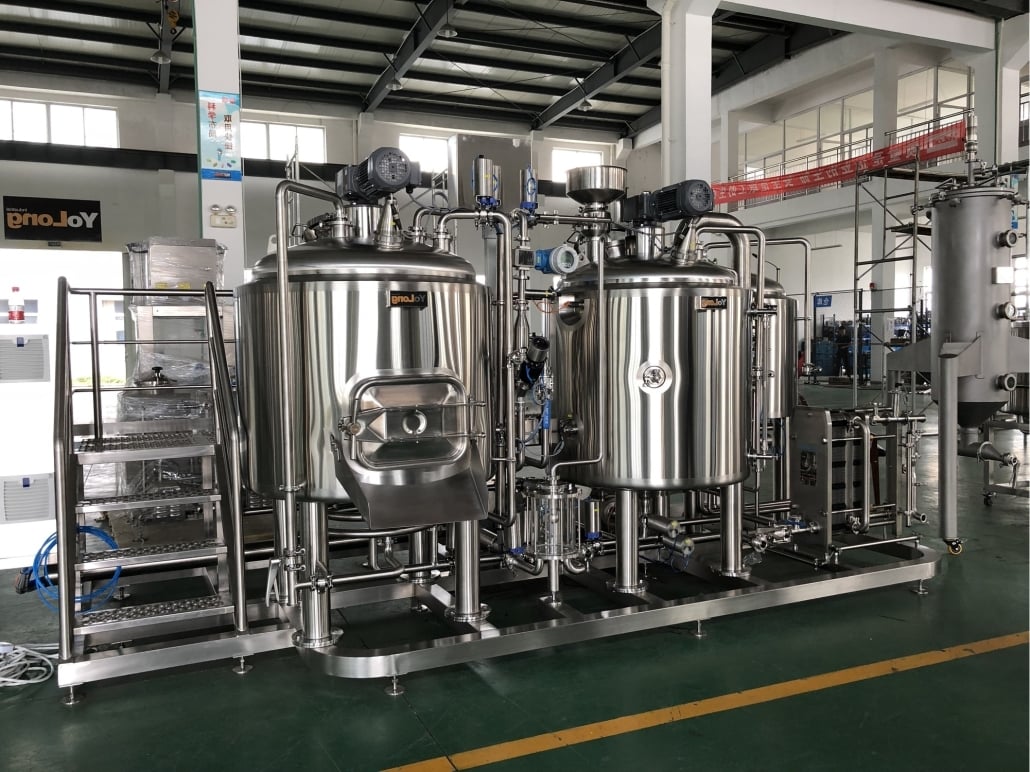
FAQ
Q: What maintenance do stainless steel beer tanks require?
A: Regular cleaning and sanitation are crucial. The frequency depends on your brewing practices and the type of beer you produce. Consult your tank manufacturer’s recommendations for specific cleaning procedures.
Q: Can I use homebrew-grade stainless steel tanks for commercial brewing?
A: It’s generally not recommended. Homebrew tanks may not meet the necessary safety standards and construction requirements for commercial use.
Q: How long do stainless steel beer tanks last?
A: With proper care and maintenance, stainless steel tanks can last for decades.
In Conclusion:
Stainless steel beer tanks are the workhorses of the brewing industry, offering a robust and reliable solution for various brewing applications. By understanding their properties, advantages, and limitations, you can make an informed decision when selecting the right tanks for your brewery, paving the way for exceptional beer production.
Remember, this information provides a general overview. It’s crucial to consult with experienced brewers and equipment suppliers to determine the most suitable options for your specific needs and brewing setup.

